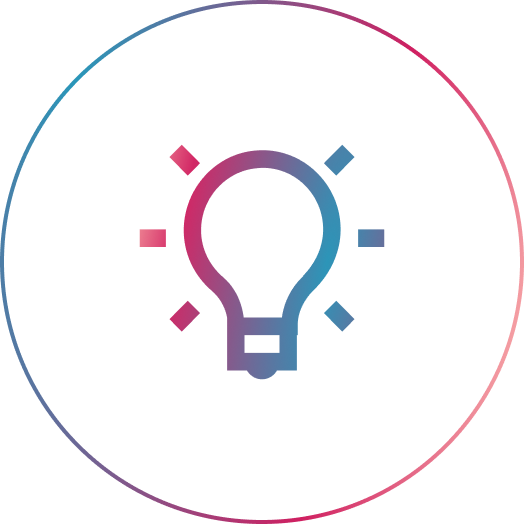Buyers are turning to ChatGPT, not Google, for construction advice. If you’re not showing up in AI-generated answers, you’re already behind.
The Shift Is Already Happening
Back in 2008, social media started changing how companies found new customers. Most construction firms didn’t notice at first. But the ones who leaned in early, who posted project photos on Facebook or ran simple ads, saw a huge return. Their cost per lead dropped by up to 80 percent compared to trade magazines and cold calls.Today, we’re standing at a similar crossroads. The shift this time isn’t social media, it’s AI. And the change is happening even faster.
Your Buyers Are Talking to AI, Not You
AI isn’t just a tool for writing emails or project scopes. It’s replacing how people find and evaluate companies. Instead of Googling “construction companies near me that can build…,” your future client might ask ChatGPT:
“What’s the typical cost to retrofit a 1980 warehouse for food-grade use? Which firms in Sacramento can handle that?”
And it will answer. Often with a list of firms, estimated costs and suggest next steps.
If your company doesn’t show up, you’re not even part of the conversation.
Here’s what’s happening:
- 55% of U.S. consumers already use AI to research products and services.
- 39% rely on it to help make purchase decisions.
- 63% of Gen Z uses AI tools like ChatGPT daily.
This is not a trend. This a total shift in behavior.
Google is Being Replaced By AI, Just How Google Replaced Yellow Pages
Because more people are relying on AI to be their new personal researcher, Google is being left behind. We used to have to do our own research on Google, YouTube, LinkedIn, trade website, etc to find the partner for our projects. Now AI is our very own personal research assistant. We ask it a question and it looks at its LLM snapshot training data, scours the internet and then returns back with a ton of sources and an answer with a list of businesses that can help us with recommended next steps when contacting each business.
If your site isn’t one of businesses listed, your traffic drops. This is why Answer Engine Optimization (AEO) matters. It’s about making sure AI pulls answers from your content, not your competitor’s.
Buyers Still Need You, But Later in the Process
AI helps prospects do most of the early work on their own. But they still come to a human expert when one of three things happens:
- They need validation. They want an expert to confirm the plan they built with AI is solid.
- They hit a complexity wall. AI can’t factor in unique conditions like your local soil reports or AHJ quirks.
- They reach a legal limit. Certain jobs require licensed professionals to review or approve.
When they hit one of these triggers, will they call you or someone else?
The New Buyer Journey: AI First, You Second
| Stage | What They Need | AI or You | What You Can Provide |
| Exploration | General viability, cost ballpark | AI | Pillar article, FAQs, cost calculator |
| Draft Plan | Step-by-step guidance | AI | Templates, scope checklists, sequencing videos |
| Validation | Expert review | AI + You | 15–30 minute schematic review, estimator input |
| Complexity Wall | Custom planning | You | Case studies, virtual consult, site assessments |
| Regulatory Handoff | Permits, licensed work | You | Fixed-fee pre-con package, AHJ liaison services |
| Execution | Build and turnover | You | Client portal, progress photos, AI status updates |
Marketing owns the first half. Sales and ops take over when real work begins. AI just moves the handoff earlier.
Why You Can’t Afford to Wait
Currently, one in three US adults are using AI tools weekly for search and 18% consider them their primary search tool. These numbers are incredible considering we have only had AI for two years and really just one year when you think of the most recent advancement in ChatGPT, Perplexity, Claude, etc. These will rise exponentially over the next 12 – 36 months with AI set to be the main way people find the companies they need to perform the tasks they require.
Just like Google and social media, if you don’t start now to optimize your website and brand for AI you will miss the largest first mover advantage in two decades.
What To Do Now (7 Plays You Can Run This Quarter)
- Add schema markup. This helps AI understand your website. Start with FAQPage, HowTo, and Product schema.
- Write one big “pillar” article. Then surround it with 4–5 short supporting FAQs.
- Start strong. Make sure the first paragraph of your article is clear and quote-ready.
- Include expert quotes. Add plain-text insights from your engineer or foreman, with their name and title.
- Publish updated data tables. Cost-per-square-foot estimates, materials lead times, timelines—AI models love structured numbers.
- Add “Last updated” dates. Search engines and models prioritize recent content.
- Use copy-prompt buttons. Let visitors copy questions that name your company and paste them into ChatGPT. This subtly trains the model to associate your name with the right answer.
How to Measure Success
Traditional SEO still matters, but add these AI-first metrics:
- Google Analytics. Are you tracking traffic coming from AI platforms?
- Citation frequency. How often do AI tools mention you?
- AI-referral leads. Add ChatGPT, Gemini, or Claude to your “How did you hear about us?” form.
- Prompt button clicks. Track engagement with AI-friendly prompts on your site.
- Lead quality score. Are incoming scopes more complete? Are leads better informed?
Tie those metrics to revenue, and you’ll have an easy case to bring to leadership.
Why Time Matters
AI searches the web just like we do. It wants to be as efficient as possible both to save money in energy and to make the user experience great. This means that AI first checks its training data that is stored in its memory. This memory consists of snapshots at set dates.
You can’t buy your way into ChatGPT’s memory. Once its training data is set, it won’t include anything published after the cutoff. GPT-4o’s cutoff jumped from October 2023 to June 2024 in just nine months.
That means, If your content isn’t there, you’ll have to wait for the next retrain. Early movers get baked into the model as go-to sources
Then, once it looks at its training data, it sends out a few bots to find the most current and reputable data to either confirm that what it has is the most recent and accurate information. If it finds more recent and better data it will serve that to the user.
That means, if your website is not easy to find or the information on your website is not set up for AI to consume or you do not have many backlinks showing you are the expert then your website will not be sourced or listed as a business that can help the user.
90-Day Action Plan
- Step 1: Audit your top services. Map each to the buyer journey stages above in section 5.
- Step 2: Choose one theme (e.g. tilt-up retrofits). Build a pillar page and supporting content
- Step 3: Add structured schema so AI bots can find the answer on your page
- Step 4: Ask ChatGPT the 10–20 questions your clients typically ask. Do you show up?
- Step 5: Iterate. Track progress. Adjust monthly.
Final Word
AI is rewriting how construction projects begin. Not with a phone call, but with a question typed into AI. When that happens, you need to be in the answer. At Three29, we help construction companies show up, stand out, and stay ahead in the age of AI. Let’s talk about how we can help you do the same.




